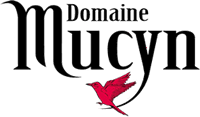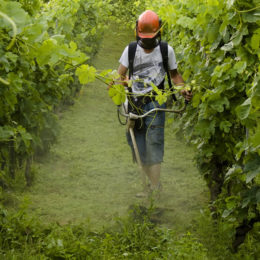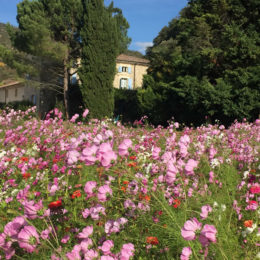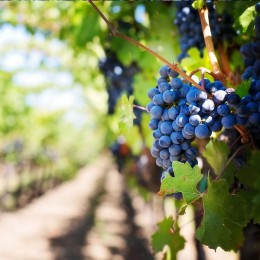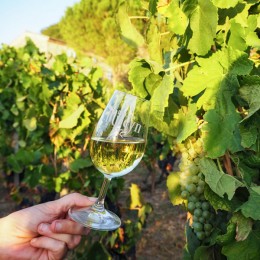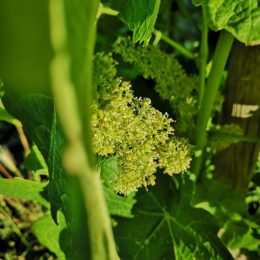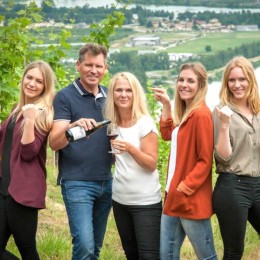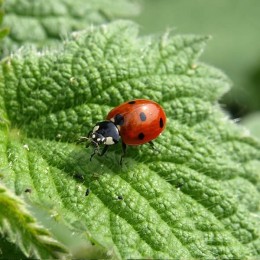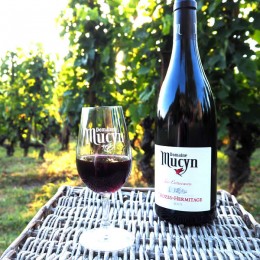Cornas - Red
Hypsos
We chose Cornas, perhaps the most secret of the northern Rhône Crus, in which to expand the range of our terroirs There are only 130 hectares of vineyards in this, the only commune that bears the name of its Cru. Syrah reigns supreme on the steep vineyard slopes. It is not hard to work out why Cornas got its name, which means "burnt land" in Celtic. It is hot in our parcel of Cornas, as it is throughout the appellation, with a dry heat which results in extremely ripe grapes. It is also not surprising that the harvesting of the northern Rhône’s red grapes often starts with this Cru.To pay tribute to the terroir where our vines culminate and in our quest for excellence, we have named our Cru Hypsos. Litterally,“Hypso” means height in Greek, but remember that in ancient times, according to the philosophers, Hypsos meant a sublime and perfect achievement. This quest for excellence is coupled with the strong character of this micro-terroir made up of granite and saprolite. Helios, the Sun, which shines on our vines, helps to achieve Hypsos

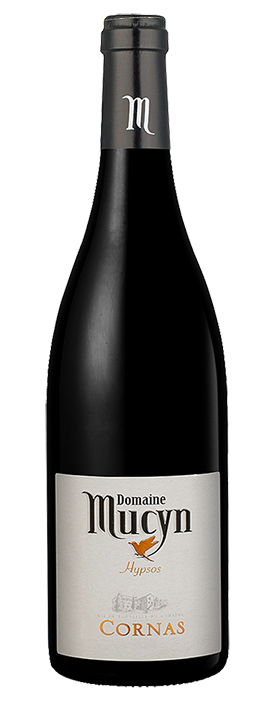
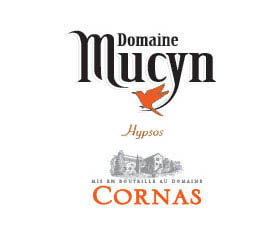
Tasting notes
The dark, opaque, almost black-red hue of our Cornas displays purple tints in its youth, which take on beautiful amber tones over time. The wine is an explosion of red fruit on the nose, where subtle hints of violets and intense notes of pepper can also be detected. With age, the wine offers up aromas of truffle, liquorice and cooked fruit. This wine, for laying down, is instantly seductive due to the power of its tannins and later, due to their smooth and velvety texture..Food pairing suggestions: This wine, ideally enjoyed at 16°C, pairs wonderfully well with red meats. With age, it is perfect with game..
Viticulture
This 100% Syrah comes from vines with an average age of ten years. They grow on a micro-terroir composed of granite and saprolite with schist, lying at an altitude of 320 m. The planting density is 7,000 vines per hectare. As with all the Domaine’s vines, this plot will be organic in 2022. Vineyard work includes de-budding, thinning and green harvesting to obtain the best maturity, while managing the yield (40Hl / ha). Harvesting, of course, must be carried out by hand and usually takes place the second fortnight of September.Vinification
The harvested grapes are destemmed but not crushed. We carry out a cold pre-fermentation maceration and then launch the alcoholic fermentation. Maceration continues for 28 days with daily cap-punching operations. We keep a careful eye on the temperatures. Once completed, the wine is aged for 18 months in barrels before going into the bottle that will grace your table.
